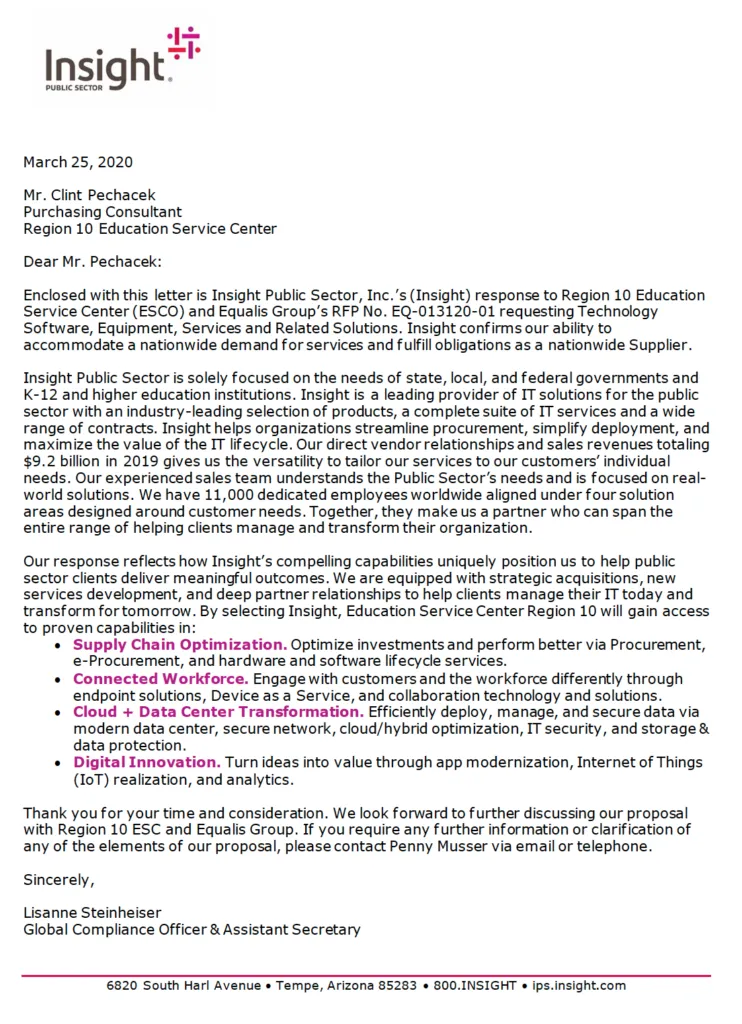What is an RFP Email Cover Letter?
An RFP (Request for Proposal) email cover letter is a crucial document that accompanies your proposal when responding to a Request for Proposal. It serves as your first point of contact with the potential client and sets the tone for the entire proposal. Think of it as your sales pitch in written form. The primary purpose of this letter is to introduce your company, highlight your understanding of the client’s needs, and demonstrate why you are the best choice to fulfill the requirements outlined in the RFP. A well-crafted cover letter significantly increases your chances of getting your proposal read and considered. Failing to properly address the RFP cover letter guidelines can be detrimental to your business, making your proposal overlooked.
Why is a Strong Cover Letter Important?
A strong RFP email cover letter is not just a formality; it’s a strategic tool that can make or break your proposal. It offers you the opportunity to make a compelling first impression, establish your credibility, and showcase your understanding of the client’s specific needs. A well-written cover letter demonstrates that you’ve paid attention to detail, taken the time to understand the RFP, and are genuinely interested in the project. Furthermore, it allows you to emphasize your unique value proposition and differentiate yourself from competitors. It also helps in humanizing the proposal, adding a personal touch that can resonate with the client. In today’s competitive business landscape, a compelling cover letter is critical for securing new projects and expanding your client base. Ignoring a high-quality RFP email cover letter can be fatal.
Key Components of an Effective RFP Email Cover Letter
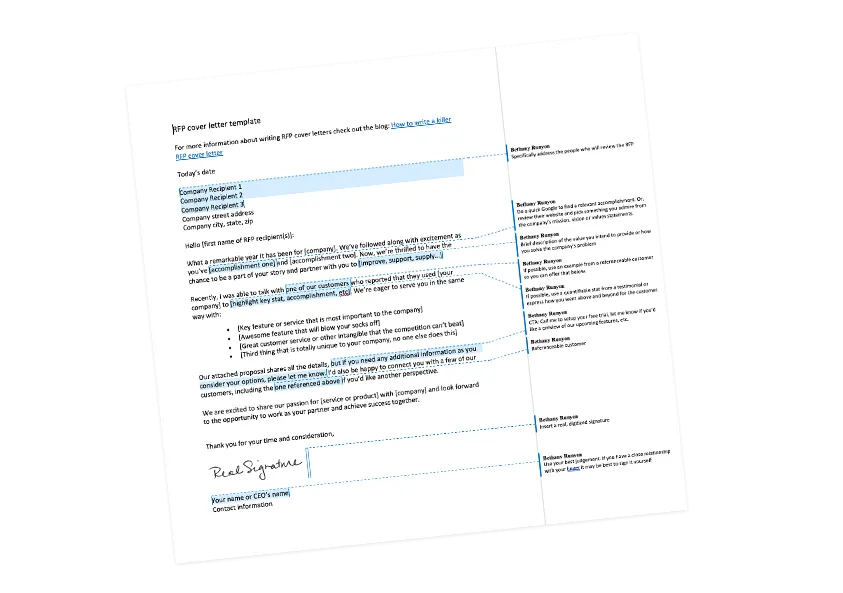
Crafting an effective RFP email cover letter requires a strategic approach. Several key components must be included to ensure your message is clear, concise, and persuasive. Focusing on these areas will strengthen your bid and increase the chances of securing the project. Every detail counts, and a well-structured cover letter reflects professionalism and attention to detail. The components are Subject Line, Recipient Information, Opening Paragraph, Body Paragraphs, Highlighting Relevant Information, Showcasing Understanding, Demonstrating Value, Call to Action and Closing, Formatting and Design, Proofreading and Editing.
Subject Line
The subject line is the first thing the recipient sees, making it crucial for capturing their attention. It should be clear, concise, and directly reference the RFP. Use the RFP number and the name of the project, where possible. Avoid generic subject lines that could be mistaken for spam or easily overlooked. Consider using phrases like “RFP Response: [Project Name] – [Your Company Name]” to clearly identify the purpose of the email. A well-crafted subject line will help ensure your email is opened and read by the decision-makers. A bad subject line can mean your email never gets a second look. (See image: rfp-email-subject-line.webp)
Recipient Information
Always address the email to the correct person, using their name and title. If the RFP specifies a contact person, make sure to use that information. Research the client to ensure you are addressing the correct individual. Using the wrong name or title can create a negative first impression, while showing a lack of attention to detail. A personalized greeting will demonstrate that you value the relationship and have taken the time to understand the client’s preferences. If the name is not provided, use a professional salutation, such as “Dear Evaluation Committee” or the appropriate title. This sets the stage for a professional and respectful exchange.
Opening Paragraph
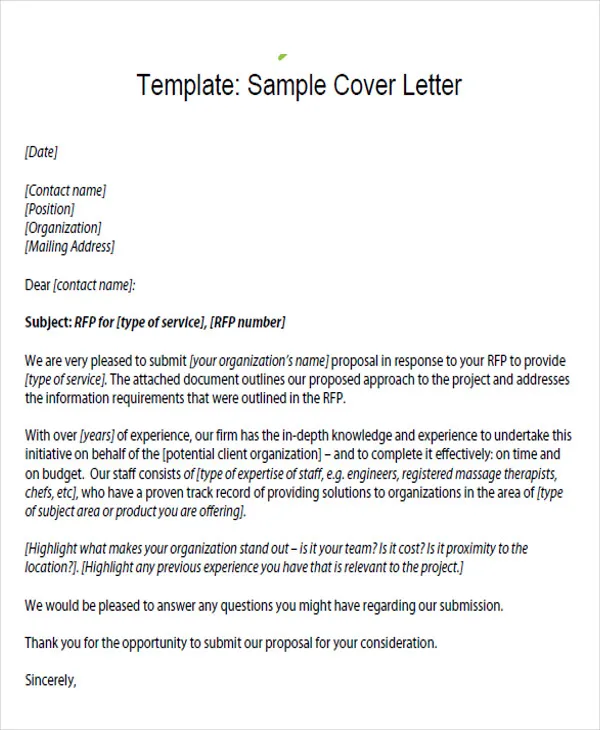
The opening paragraph should immediately state your intent to respond to the RFP and briefly introduce your company. Mention the project or services you are proposing and express your enthusiasm. Keep the tone professional, yet enthusiastic. This section should grab the reader’s attention and encourage them to continue reading. It should quickly establish your company’s relevance and demonstrate your understanding of the RFP’s objectives. Avoid generic introductions and tailor your opening to the specific project and client. A strong opening will immediately make you stand out. Start with a clear and concise statement, showing excitement and clarity to proceed.
Body Paragraphs
The body of your cover letter should provide details about your company, highlight relevant experience, and explain how you will meet the client’s needs. Break down the key aspects of the RFP and address how your company aligns with each requirement. This section should showcase your understanding of the project and demonstrate your capabilities. Use clear, concise language, and avoid jargon. Focus on benefits, not just features. Quantify your achievements with data and examples to support your claims. Consider using bullet points to organize key information, making it easier for the reader to digest. (See image: rfp-email-body-paragraphs.webp)
Highlighting Relevant Information
Carefully select the information most relevant to the RFP’s requirements. Focus on your company’s strengths and experience that directly align with the client’s needs. Avoid including irrelevant information that could distract the reader. Tailor your content to showcase your understanding of the RFP’s goals and objectives. This includes demonstrating that you understand the current situation, the objectives, the scope of work, and any required deliverables. Use specific examples and case studies to illustrate your successful past projects. Providing clear evidence of your expertise will build trust and convince the client of your ability to deliver results.
Showcasing Understanding
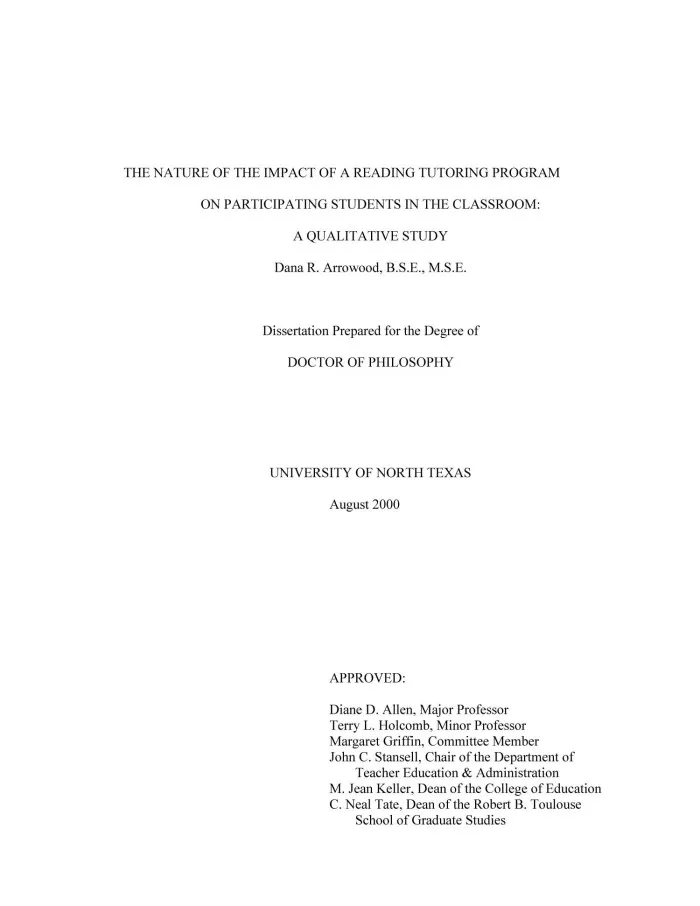
Demonstrate your understanding of the client’s needs by directly addressing the challenges they are facing and explaining how your solutions can help. Show that you have thoroughly reviewed the RFP and have a clear grasp of its requirements. Use the client’s language and terminology to build rapport and show that you are speaking their language. Clearly articulate your approach to solving the client’s problems and achieving their desired outcomes. This section should convey that you have a deep understanding of the project’s complexities and are prepared to offer tailored solutions. Showing a strong understanding increases your odds of winning the bid.
Demonstrating Value
Clearly articulate the value you bring to the project. Explain how your company’s services or products will deliver benefits to the client. Highlight your unique selling points and what sets you apart from competitors. Focus on the positive outcomes the client can expect, such as increased efficiency, cost savings, or improved performance. Quantify your value proposition whenever possible by providing data and examples of past successes. This helps the client visualize the return on investment they can expect by selecting your company. (See image: rfp-value-proposition.webp)
Call to Action and Closing
Conclude the letter with a clear call to action. State your interest in moving forward and provide specific steps for the client to take, such as scheduling a meeting or reviewing your proposal. Include your contact information and express your willingness to answer any questions. Thank the client for their time and consideration. A professional closing statement, such as “Sincerely” or “Best regards,” followed by your name and title, completes the letter. Ensure your contact information is accurate and up to date. A strong closing paragraph and call to action leave a lasting impression on the reader.
Formatting and Design
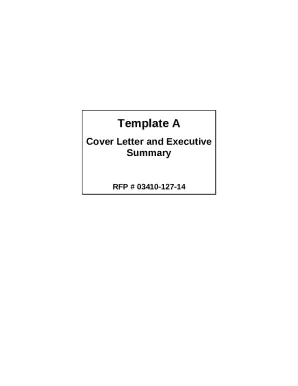
Proper formatting and design are essential for readability and professionalism. Use a clear and easy-to-read font, such as Arial or Times New Roman. Keep the text concise and well-organized with headings, subheadings, and bullet points to break up large blocks of text. Ensure consistent spacing and alignment throughout the document. Use a professional email signature, including your name, title, company, and contact information. Maintain a clean and uncluttered layout, avoiding excessive colors or graphics. A well-formatted cover letter shows that you pay attention to detail, which is a critical aspect of an RFP.
Proofreading and Editing
Proofreading and editing are non-negotiable steps in the RFP email cover letter writing process. Carefully review the document for any grammatical errors, typos, or inconsistencies. Have someone else proofread your letter, as a fresh pair of eyes can often catch errors that you might miss. Ensure that the tone is consistent and professional throughout the letter. Verify all facts and figures. A polished, error-free cover letter reflects well on your company and shows a commitment to quality. Mistakes in grammar and spelling can undermine your credibility. (See image: rfp-proofreading-tips.webp)
Tips for Writing a Compelling RFP Email Cover Letter
To create a truly compelling RFP email cover letter, consider these additional tips. Following them can improve your chances of winning the project. Knowing how to be exceptional helps build confidence. Always keep the target audience in mind to secure the project.
Tailoring to the Specific RFP
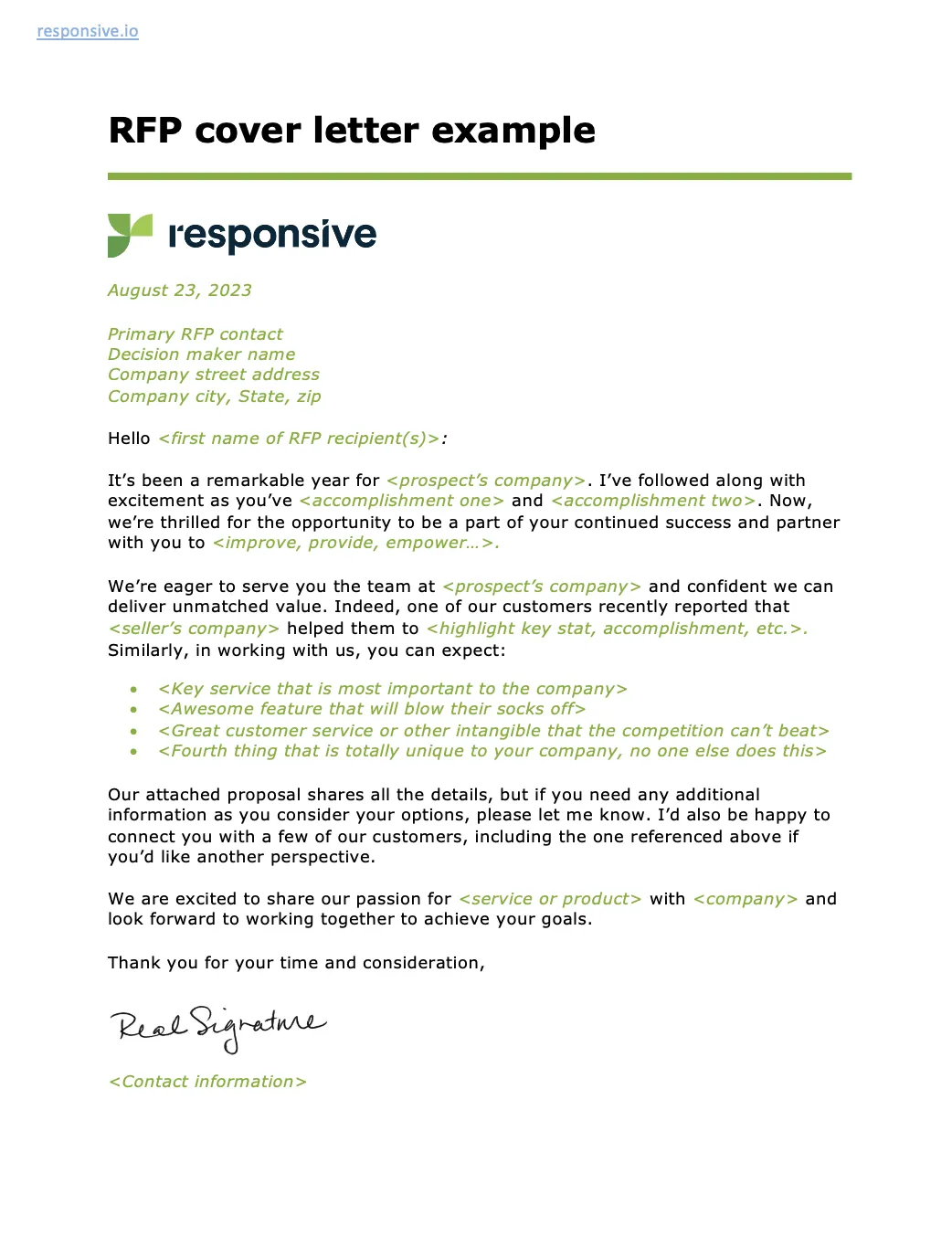
Avoid using a generic cover letter. Customize your letter to specifically address the requirements and objectives outlined in each RFP. Carefully review the RFP to understand the client’s needs, and then tailor your content accordingly. Highlight the aspects of your services or products that align most closely with the client’s needs. Show that you have read and understood the RFP thoroughly. This shows the client you value their project. Address the specific requirements and challenges presented in the RFP to show that you are attentive.
Emphasizing Benefits, Not Just Features
When describing your services or products, focus on the benefits they provide rather than just listing features. Explain how your offerings will improve the client’s situation and help them achieve their goals. Quantify the benefits whenever possible by providing data and examples. This helps the client understand the value you bring and makes your proposal more persuasive. Always focus on the benefits of your offer to win the client’s attention.
Using Keywords Strategically
Incorporate relevant keywords throughout your cover letter to increase the chances of your proposal being noticed by the client and any automated screening systems. Identify the key terms and phrases used in the RFP and integrate them naturally into your text. This can help your proposal rank higher. Avoid keyword stuffing, which can make your letter sound unnatural and damage your credibility. A well-placed keyword strategy enhances the relevance of your proposal. It makes it easy for the clients and any screening software to notice your proposal.
Best Practices for Sending Your Cover Letter
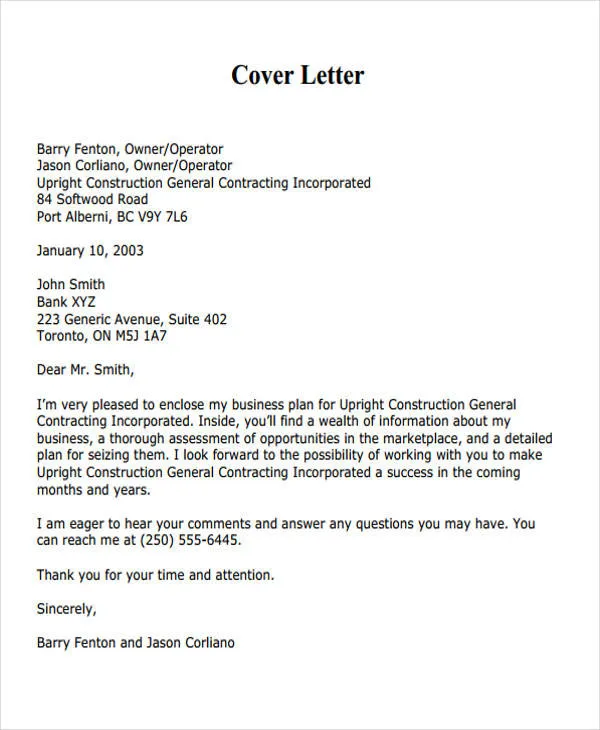
Following best practices for sending your cover letter can significantly improve your chances of success. Making sure the email is sent and delivered properly is important. Knowing how to send your letter can sometimes be just as important as the writing itself.
Attaching the RFP Response
Ensure that you attach your full RFP response to the email, along with any supporting documents. Double-check that the files are in the correct format (e.g., PDF) and that they open correctly. Clearly label the attachments to help the recipient quickly identify and access the documents. Always reference the attached files in the cover letter. This step is crucial; omitting the attachments or sending the wrong files can derail your proposal. Attach the files to make sure the client gets the information they need. The more clear and concise the better.
Following Up
Follow up with the client a few days after sending your proposal to confirm receipt and express your interest in the project. This shows your proactive approach and eagerness to work on the project. Keep the follow-up email brief and polite, reiterating your interest and offering to answer any questions. Respect the client’s timeline and avoid being overly aggressive. A well-timed follow-up can make a positive impression and keep your proposal top of mind. A follow-up email can reaffirm your offer, and the client appreciates the extra attention.
Common Mistakes to Avoid
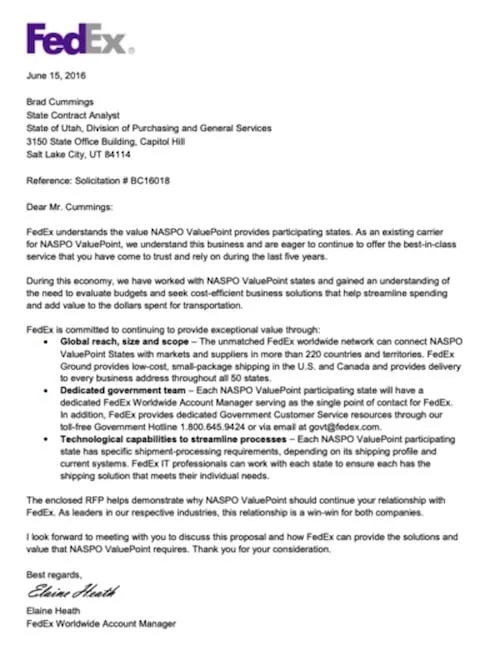
Avoiding common mistakes can significantly improve the effectiveness of your RFP email cover letter. Watch out for these areas to ensure a better chance of success. Being able to learn from mistakes helps create a better bid.
Ignoring Instructions
Carefully read the RFP instructions and adhere to them exactly. Failing to follow the guidelines, such as formatting requirements, page limits, or submission deadlines, can lead to immediate disqualification. Pay close attention to every detail. This demonstrates your ability to follow directions and respect the client’s preferences. Not adhering to directions is a clear sign of not being prepared for the job. Ignoring the specific instructions given is a quick way to lose the opportunity.
Using Generic Language
Avoid using generic, boilerplate language. Customize your cover letter to fit the specific RFP and client. Using generic language can make it appear as though you haven’t invested the time and effort to understand the client’s needs. Show that you care. Research the client and tailor your language to demonstrate your understanding of their business. Specific language shows that you have a true understanding of the project. (See image: rfp-mistakes-to-avoid.webp)
Sending Without Proofreading
Always proofread your cover letter before sending it. Typos, grammatical errors, and inconsistencies can damage your credibility and undermine the professionalism of your proposal. Mistakes suggest a lack of attention to detail and can create a negative impression. A well-proofread document demonstrates that you care about the quality of your work. Proofreading is essential for ensuring that your message is clear, concise, and error-free. Have someone else review your document as well; a fresh pair of eyes can often catch mistakes that you might miss. (See image: rfp-email-best-practices.webp)
